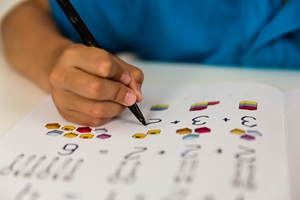The way U.S. schools teach math has changed over time. Even before the implementation of the Common Core State Standards, teaching models have developed and evolved, each trying to produce students who could become well-educated workers. Understanding how math used to be taught may shed some light onto why the Common Core and aligned curricula introduce the subject in the way they do. Here's a quick look at the history of math education in the U.S. prior to the 1970s:
What should we focus on?
Most of the math education argument has been fought between two camps: pedagogy and content. Should educators know how to teach well and have solid math skills, or should they be math experts with some decent teaching skills? This argument goes far back, but we'll start in the 1920s when public education was already part of U.S. society.
During these times, schools decided math education was important, and so introduced it to students. What's more, algebra became the core element to teaching the subject. Into the 1930s, creators of classroom curricula began making textbooks and worksheets. Pedagogy was stronger, as educators and not math experts developed curricula.
The Activity Movement and wartime
According to Columbia College, Pre-World War II, educators began following the Activity Movement. The theory behind it consisted of a belief that methodical teaching wasn't necessary. As the saying went "we teach students, not subject matter." For this reason, students didn't do multiplication table drills. The Activity Movement proved to be a poor teaching model, as military recruits for WWII didn't know arithmetic very well. In fact, the military had to teach basic math to their soldiers.
During wartime, students could choose an educational path during secondary school, as most districts offered a "life track" or a "college track." The former focused on housekeeping types of skills (health, citizenship, etc.) and the latter included more math.
The start of something good
The Space Race and the launch of Sputnik in 1957 created a major shift in math education. The U.S. feared it was falling behind, and so began to push for more math and science in schools. The federal government increased funding for schools, which led to what many called "The Golden Age" of math education. In fact, many colleges worked to create math education programs for K-12 schools. Looking back at the 1950s and '60s, most educational historians remember the period for its use of abstract thinking in primary math.


